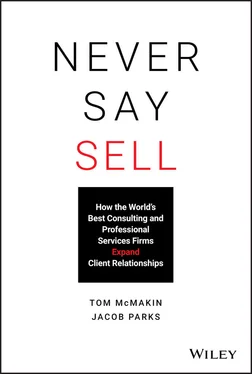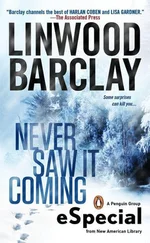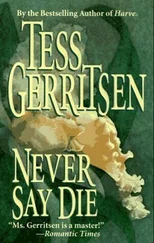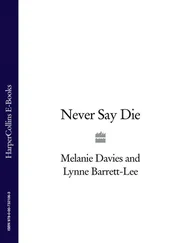The Economist recently wrote that consultants “scare companies by laying bare where they are failing, then soothe them with counsel on how to improve.” We don't agree with the “scaring” part – that sounds like the kind of sales manipulation we hate – but we do know that expert services providers work to help improve their clients. As experts, we offer our experience, our point of view, our intelligence, our training, and the bitter lessons we have learned from doing what we do for many years.
This book is a sequel of sorts to a book Tom wrote with Doug Fletcher called How Clients Buy: A Practical Guide to Business Development for Consulting and Professional Services . In that book, we asked the question,
What's the secret to winning new work in professional services?
We interviewed rainmakers at leading legal, consulting, engineering, and financial services firms to learn more about the process of how clients engage with expert services providers. We learned a lot, but the book wasn't out long before many of you wrote us to say: What we're really interested in is expanding our relationships with our current clients. How do we do that?
This feedback isn't surprising. When we ask expert services providers how much of their year-over-year growth in revenues comes from new logos versus expanded assignments, they report new work with existing clients represents an astonishing 80% to 90% of new revenues. We see those same numbers at our company, Profitable Ideas Exchange (PIE™). In the short run, at least, expanding current relationships represents a much larger opportunity than cold calling new prospects.
Sometimes we hear rainmakers talk about how they work to “land and expand” a client. If How Clients Buy gave us landing lessons, Never Say Sell describes how to expand, asking a simple question,
What's the secret to growing your work within clients?
Expert Services Are Different
In How Clients Buy, we learned that expert services are bought differently than, say, a laptop. Tom and his wife, Mary, just bought a new family computer and landed on a Lenovo X1 (on sale at Costco with 16 GB of RAM!). They did the research, comparing processor speed, reliability tests, weight, size, color, storage capacity, and price. They relied on PC Magazine 's side-by-side descriptions, building out a matrix that laid out various laptops' key qualities. Then they compared the qualities that were most important to each of them. Mary wanted something light and fast; Tom wanted something that would last for years. Both agreed they would mostly use it for email and the Internet.
Tom and Mary ranked several machines they identified against their priorities, narrowing the choices and easily making the final decision. This approach to buying, call it the “Excel-driven comparative shopping method,” is the way we buy cars, phones, and air travel as we seek to balance features and attributes in the search for a good fit with our needs and budget.
That's not how we buy expert services, however. Expert services are bought on reputation, referral, and relationships, not features and attributes or even price.
As Michael McLaughlin has written, “What sets service providers apart from other sellers is that (we) are first and foremost idea merchants.”
For example, imagine your parents have retired to the coral beaches of Naples, Florida. They are of an age where it doesn't make sense for them to do their taxes (they can't remember where they put their car keys, much less whether their K-1 income qualifies for a 20% deduction this year). They call you one day and say, “Can you help us find someone down here who can do our taxes?”
You don't have any idea whom you should use. There's no PC Magazine that ranks Floridian tax accountants and no online grid that balances services against price and quality. You fly down to see them at Thanksgiving, take a Lyft to the graduated assisted living facility, and spot a billboard on the side of the road that says, “McMakin and Parks: Collier County's Smartest CPAs.” You chuckle because that is a bold and somewhat ridiculous claim.
You pick up a brochure in the lobby of their living facility. It proclaims, “Dewey, Cheatum, and Howe: Paradise Coast's Cheapest CPAs.” You chuckle again. That's not what you are looking for. You want a good tax accountant, not to take the last penny off the table. Indeed, you find yourself wondering if there might be an inverse relationship between the price an expert services provider charges and perceived quality. After all, a $1,500-per-hour San Francisco attorney is thought to be better than one that charges $150 per hour.
In the end, you call a friend from college who works at Ernst & Young out of the Miami office and ask if they could recommend a CPA in Naples?
They say something like, “I do cross-border work, so I'm not your guy, but I have a partner here whose little sister graduated a couple of years ago from the University of Texas in Austin at the top of her class. She's got a small firm in Fort Myers, and it has a great reputation. In fact, she is doing taxes for some of the partners who have retired. I'll introduce you.”
Bam. You're done. No spreadsheet. No ranking of features or processor speed. Just reputation, referral, and relationship. That's how clients buy expertise.
Growing Your Work: How Hard Can It Be?
Doing more work for a client with whom we have already worked should be easy. Once we have completed a project for a client, opportunities should start pooling at our feet like puddles after a spring shower. We've built credibility by delivering good work and trust in our relationships. We think of credibility – delivering good work – and trust – building strong relationships – as the two bulwarks of a productive consulting relationship and we've now cemented both. Our client has other things they need help with and where our expertise would be useful. The phone should be ringing off the hook.
Maybe, but maybe not.
We'll use PIE as an example. When we joined forces 10 years ago as CEO and COO, the company had a single client that accounted for 95% of revenues. That worried us a lot, so we turned all our attention to winning new clients.
Today, our biggest client represents a fifth of the firm's revenues. The rest comes from the new accounts the team has brought on. Our theory was that if we could establish a meaningful presence in these new accounts – most of which are multibillion-dollar companies – future growth would be easy. In a kind of Ray Kinsella – inspired Field of Dreams strategy, we thought, “if we build it, they will come.”
But that didn't always happen.
Add-on work didn't magically appear. We've had to fight for it. One of our oldest projects, for example – a $140,000 recurring annual program – with a client that is a $14 billion information services firm, failed to grow itself. The client was delighted with our work and asked us back to the dance every year, but not one of their 44,000 employees ever called us up and asked us to do this same work in other parts of the business.
Likewise, PIE has worked for a large IT integration firm for 15 years, aggregating groups of chief financial officers, chief information officers, and chief operating officers. Five years ago, the client pivoted and announced that it was focused on helping chief digital officers navigate disruption and transformation. Did it call PIE and ask us to pull together groups of chief digital officers? No. This, despite the fact they know we do good work, they trust us, and we have a long record of high ROI performance.
Читать дальше












